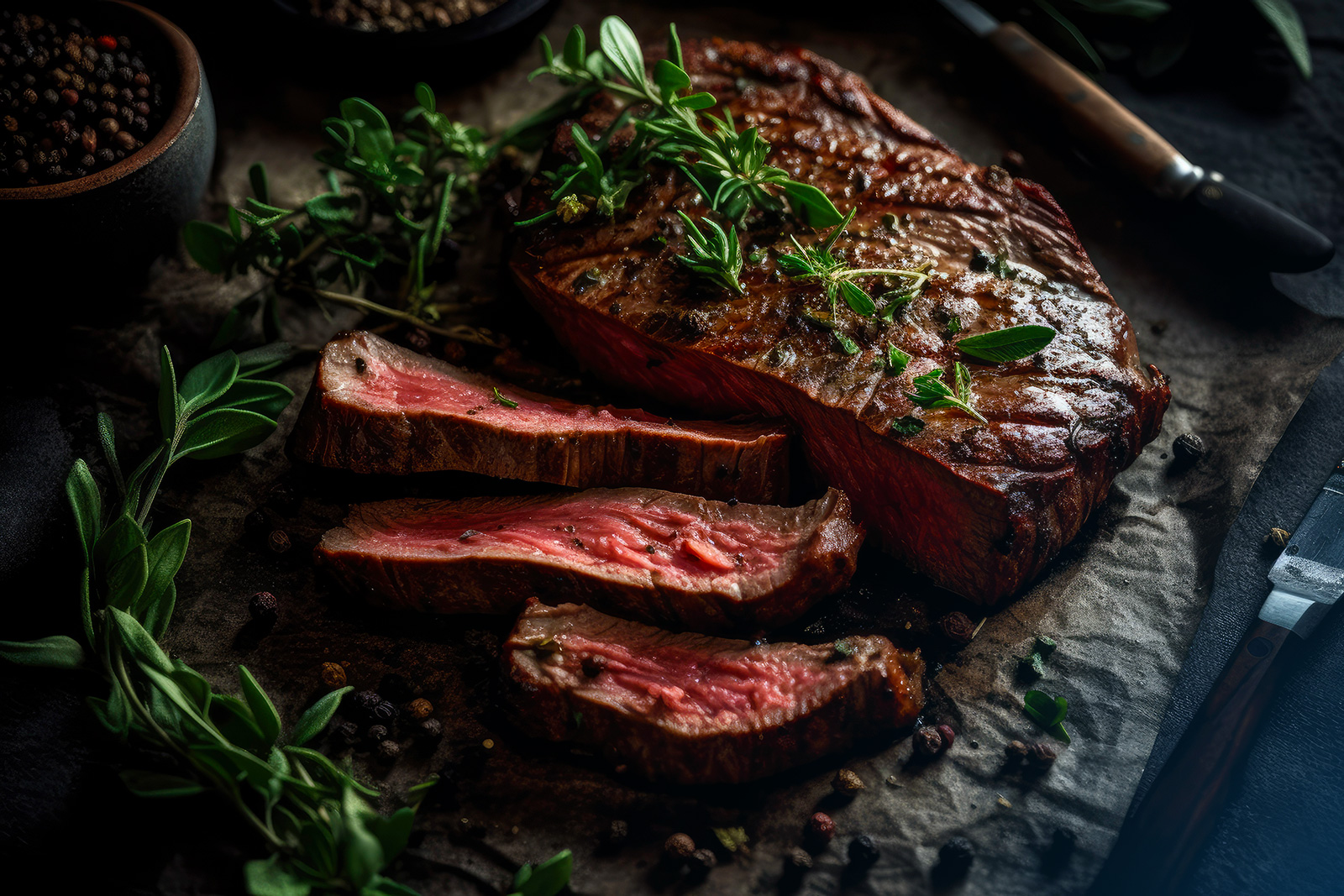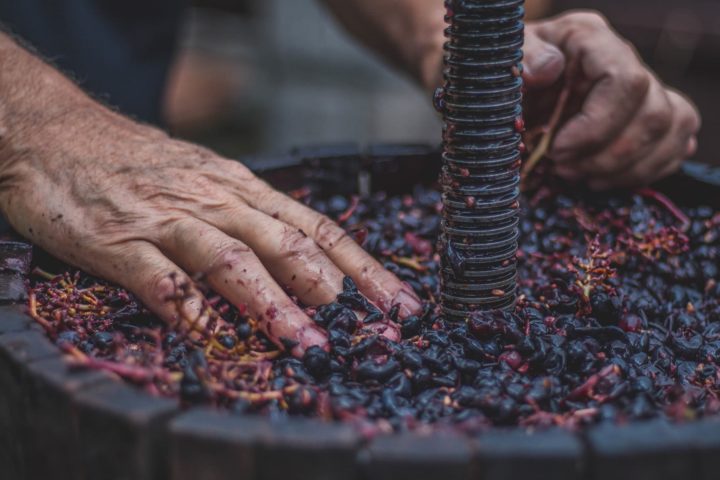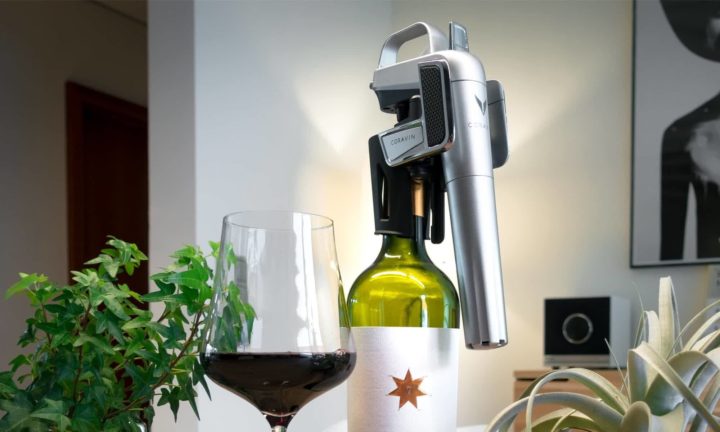The taste of a properly cooked steak delights people all over the world. It is known for its rich flavor, tender texture and satisfying sizzle. However, preparing a proper steak presents a difficult task for many, especially for kitchen novices or those who have little confidence in their cooking skills. But do not worry, dear steak lovers! With the right knowledge, tools and methods, anyone can master the art of preparing a delicious steak.
In this article you will learn everything about the selection, preparation and cooking of a beef steak. You’ll learn what cooking levels there are, what to look for when choosing the right pan and temperature, and what role fat content plays in a good steak. We will also look at the most common mistakes made when preparing steaks, the most important utensils and the sous vide method. With a little practice and patience, you’ll soon become a steak pro and wow friends and family with your newly acquired cooking skills.
Choosing the right cut of meat
Before you can start preparing your beef steak, you first need the right meat. Which cut of meat you choose depends mostly on your personal preferences and budget.
If you’re a fan of butter-tender meat without a lot of fat, a beef tenderloin is your best bet. If you prefer a little more bite and more intense flavor, you’d better reach for the ribeye or even neck steak.
The thickness of your meat is also crucial. Therefore, make sure that it was cut at least 3 cm thick and against the grain.
The 5 most popular steak cuts
- Ribeye / Entrecôte: Known for its bold flavor, ribeye is the first choice of many steak lovers. It is a well-marbled cut, which means it has a high fat content, contributing to its rich flavor and tender texture. This cut is best suited for high heat cooking, such as pan frying or grilling.
- Rump steak: This is the rear part of the roast beef. Its characteristic fat edge ensures that the meat remains juicy and brings a nutty, aromatic flavor. Please never cut away the edge before frying.
- Rump steak: cheaper and lean, this cut is considered perfect for those who like to give up fat but not good taste.
- Filet Mignon: A smaller, leaner cut, filet mignon is prized for its tender and delicate flavor. This cut is best cooked over gentle heat, such as the sous vide method or in the oven at a low temperature.
- T-Bone / Porterhouse: These cuts are basically two cuts in one – the tender filet mignon and the flavorful roast beef, separated by a T-shaped bone. The two cuts can be prepared using different methods, but require some skill to ensure that both parts are cooked evenly.
Preparation of the meat
Once you’ve selected your desired cut of meat, it’s time to prepare it for roasting. Proper preparation is critical to a perfect steak and consists of several steps:
- Bring your steak to room temperature: to ensure even cooking and avoid a cold center, take your steak out of the refrigerator about 30-60 minutes before searing. This allows the meat to come to room temperature and relax, resulting in a more tender and uniform finish.
- Pat it dry: Too much moisture on the surface of your steak will prevent it from searing and browning well. Gently blot the piece of meat with a paper towel to remove excess moisture.
- Seasoning: Season your beef steak generously with salt. The salt helps form a good crust on your steak and enhances its natural flavors. You should always use pepper and other spices after frying, as they burn due to the high heat and leave a bitter taste.
Fry and cook the steak properly
There are several steps to preparing a good steak, each with its own purpose:
- Sear: This involves heating the surface of the steak quickly at a high temperature to form a tasty frying crust. This step is essential for the formation of an intense, caramel flavor and an attractive appearance.
- Cook to the desired doneness: After roasting, your meat needs to be cooked to the desired doneness. You can accomplish this either in a skillet or in a preheated oven.
- Resting: To obtain a tender and juicy steak, it is important to let it rest after roasting. Resting spreads the meat juices throughout the piece, resulting in a tastier and more satisfying bite.
Table: cooking stages and the core temperature
| Steak cooking degree | Core temperature (°C) |
| Bleu / Bloody | < 43°C |
| Rare | 49-54°C |
| Medium Rare | 54-57°C |
| Medium | 57-63°C |
| Medium Well | 63-68°C |
| Well Done / Cooked Through | > 68°C |
Did you know? Although many steak lovers love to eat their piece bloody, there is no blood left in the meat. The reddish liquid that comes out is merely cell sap, which owes its red color to the protein myoglobin.
The right pan and temperature control
The right steak pan for searing your steak and the heat at which you cook it will have a significant impact on the outcome. Below are some tips to help you choose the right pan and set the right temperature:
- Thick bottom: A heavy pan with a thick bottom, such as cast iron or a stainless steel pan, is ideal for frying steaks because it retains heat well and distributes it evenly. This guarantees a uniform frying temperature and browning.
- Preheat the pan: Before you put your steak in the pan, you need to preheat it to the right temperature. Only in a hot steak pan it develops a good frying crust and does not burn.
- Regulate the heat: During the whole cooking process you have to keep an eye on the roasting temperature. For a crispy crust, you need high heat when roasting, however, you don’t want to char the meat. Modern induction stoves in particular can quickly reach excessively high temperatures on the highest setting.
Please never use a coated pan for frying steak. The coating cannot withstand the high temperatures, burns and releases carcinogenic substances that you really don’t want on your plate.
Cooking techniques: Searing, baste and rest
Now that you know the importance of pan selection and temperature control, let’s get into the specific cooking methods that will help you cook properly:
- Browning: This process is of crucial importance. To do this, heat a heavy frying pan over high heat until it is really hot. Now add a few tablespoons of a heat-resistant oil (such as canola oil) or clarified butter. Let it sizzle for about 2-3 minutes per side until a nice brown fry crust has developed. Don’t forget to sear the sides as well.
- Flavoring: By dousing it with clarified butter and spices, you’ll add even more flavor and richness to the meat. After frying, reduce the heat to low and add a few tablespoons of clarified butter, crushed garlic cloves and fresh herbs ( e.g. rosemary and thyme). Tilt the pan slightly and use a spoon to keep ladling the melted butter over the steak as it cooks. In this way, the meat retains its moisture and absorbs the flavors of the spices.
- Resting Time: Once it reaches the desired doneness, remove it from the pan and let it rest on a cutting board or plate for 5-10 minutes. Cover the steak loosely with some aluminum foil to keep it warm. After resting, cut it into strips against the grain and serve.
The importance of fat for a perfect steak
Fat plays a critical role in a prime steak, contributing to both its flavor and tenderness. The marbling, or intramuscular fat, gives the steak its rich, buttery flavor and melt-in-your-mouth texture. During preparation, this fat melts and is absorbed by the meat, making it juicy and tender.
In addition to marbling, the outer fat cover (e.g. on rump steak) is also important for a juicy end result. Although some prefer to trim away this fat, it should not be removed during cooking as it provides additional flavor and moisture. As the fat melts, it infuses the meat for a juicy and flavorful experience.
Tools and equipment for cooking steak
The right tools and equipment make a big difference in the success of your steak roast. Here you will find some essential utensils that you should have in your kitchen:
- Frying pan with heavy bottom: As mentioned earlier, a heavy-bottomed pan, such as a cast-iron skillet or stainless steel pan, is ideal for frying steaks. These pans retain heat well and distribute it evenly for even cooking.
- Tongs: A good set of grilling tongs is important for turning and handling your meat during the cooking process. Choose pliers with a comfortable grip and a long handle to protect your hands from the heat.
- Meat thermometer: A meat thermometer is an indispensable tool that allows you to accurately read the desired cooking point of your steak. Choose a digital thermometer with fast reading time and accurate temperature display.
- Cutting Board: A large, sturdy cutting board is essential so you can rest and carve the meat. Opt for a board made of a knife-friendly material, such as wood or bamboo.
- Sharp knives: A good kitchen and steak knife is essential. You should never apply too much pressure when cutting, but let the blade sharpness work for you. This preserves the coveted meat juice.
Steak in the oven: With the right temperature to the perfect degree of cooking
To cook your steak to perfection, you need to get it to the right core temperature after searing. If you prefer your beef rare to medium-rare, it is usually enough to sear the meat for 2 minutes and then let it rest briefly. For thicker pieces, you can also pull it to the right cooking point in the pan, but it’s easier to re-cook it in the oven.
To begin with, preheat your oven to 150 °C (convection oven: 120 °C, gas: level 1-2) and place your piece of meat (including the pan) in the preheated oven until it has warmed up to 2-3 degrees below the desired core temperature. The best way to do this is to use a roast thermometer. If you don’t have one handy, you can periodically determine the degree of cooking with the heel of your hand.
Palm method for cooking point determination
The finger drink is a time-honored method that tells you quite reliably that the steak has reached the desired cooking level. To do this, simply bring the thumb of your left/right hand together with your index, middle or ring finger. Then, with the index finger of your other hand, press on the heel of your hand and compare the pressure resistance with that of your beef steak.
- Rare: Thumb on index finger. The ball of your thumb is relaxed and very soft. If your meat has this pressure resistance, it is still rare.
- Medium: thumb on middle finger. The ball of the thumb is slightly tense. If your beef steak shows the same resistance, it is medium.
- Well Done: Thumb on ring finger: The muscle is very tense and hard. If your meat has the same hardness, it is cooked through.
Sous-Vide: Tender steak – every time!
The sous vide method is a popular cooking technique in which food is enclosed in a vacuum-sealed bag and cooked in a temperature-controlled water bath. This process is known for its high precision and consistent results and is perfect for preparing steaks.
With sous vide, you cook your meat until it reaches the desired cooking point without the risk of overcooking. The slow and gentle cooking method preserves the natural juices of the meat, resulting in an incredibly tender and flavorful beef steak.
If you’re going to cook your steak using sous vide, season it to taste and place it in a vacuum-sealed bag. Set your sous vide cooker to the desired cooking temperature place the bag in the water bath for the recommended time (usually 1-4 hours, depending on the thickness of the steak). At the end, take the steak out of the bag, pat it dry and sear it briefly in a hot frying pan to create a tasty crust. The meat juice that has collected in the bag is perfect for making a delicious sauce.
Avoid common mistakes when preparing steak
Even experienced cooks occasionally make mistakes when grilling steaks. To achieve the best results, you should be aware of the following pitfalls:
- Overcrowding: If you fry too many steaks in one pan, the temperature will drop, causing the steaks to not sear properly and cook unevenly. Fry your steaks in several batches, if necessary.
- Do not let the steak rest: As mentioned above, the resting period after frying is essential to achieve a tender, juicy result. If you cut it too early, the juice will leak out and it will become dry and lose flavor.
- Overcooking the steak: Ste ak meat that has been overcooked is tough and inedible. To avoid overcooking, you must measure the core temperature of your steak with a meat thermometer and remove it from the stove as soon as it is just a few degrees off the desired doneness. Take into account that your steak will still cook a little bit during the resting phase.
- Use the wrong fat: To sear your steak, you need an oil with a very high smoke point. Olive oil and also butter cannot withstand the strong heat and develop bitter substances as well as carcinogenic substances.
Delicious side dishes with steak
When enjoying a juicy beef steak, the right side dish makes for a very special taste experience. Among the classics are, of course, French fries. The golden and salty tidbits complement the savory flavors of the meat.
However, if you’re looking for something more substantial, you could supplement your meal with a serving of vegetables. From roasted asparagus to sautéed mushrooms, the possibilities are endless and will add color and flavor to your plate.
For those looking for a healthier alternative to traditional fries, sweet potato wedges are a fantastic choice. These vitamin- and nutrient-rich treats are not only delicious, but also a healthy change from your steak dinner.
Besides, a fresh salad is a great alternative that you can dress according to your personal preferences. From simple green salads with a light vinaigrette to elaborate creations with nuts, fruits and a creamy dressing, salads are a versatile and nutritious addition to your beef steak.
Last but not least, don’t overlook the ever-popular beans. Whether you opt for a hearty serving of baked beans, a spicy black bean salsa, or a savory bean salad, these fiber-rich legumes are a delightful addition to your main dish.
Conclusion: The art of steak perfection
Preparing a good piece of meat is an art that requires patience, practice and a willingness to learn from mistakes. Only if you know the importance of choosing the right cut of meat, the right preparation and the different cooking techniques, you will succeed in preparing an excellent steak.
Be sure to use a heavy-bottomed pan, control the heat throughout the cooking process, and let it rest before serving. Experiment with different cuts, cooking methods and seasonings to find your favorite steak. And if you want to experiment a little more, try the sous vide method for extra tender and juicy results.
By avoiding common steak preparation mistakes and having the necessary tools and equipment on hand, you’ll take your steak cooking skills to a new level. With a little time and practice, you too can become a steak pro and impress your guests with your skills.
So throw on the grill or preheat the skillet – it’s time to discover the secrets to a perfectly cooked steak and prepare a great beefsteak every time. Have fun cooking!









